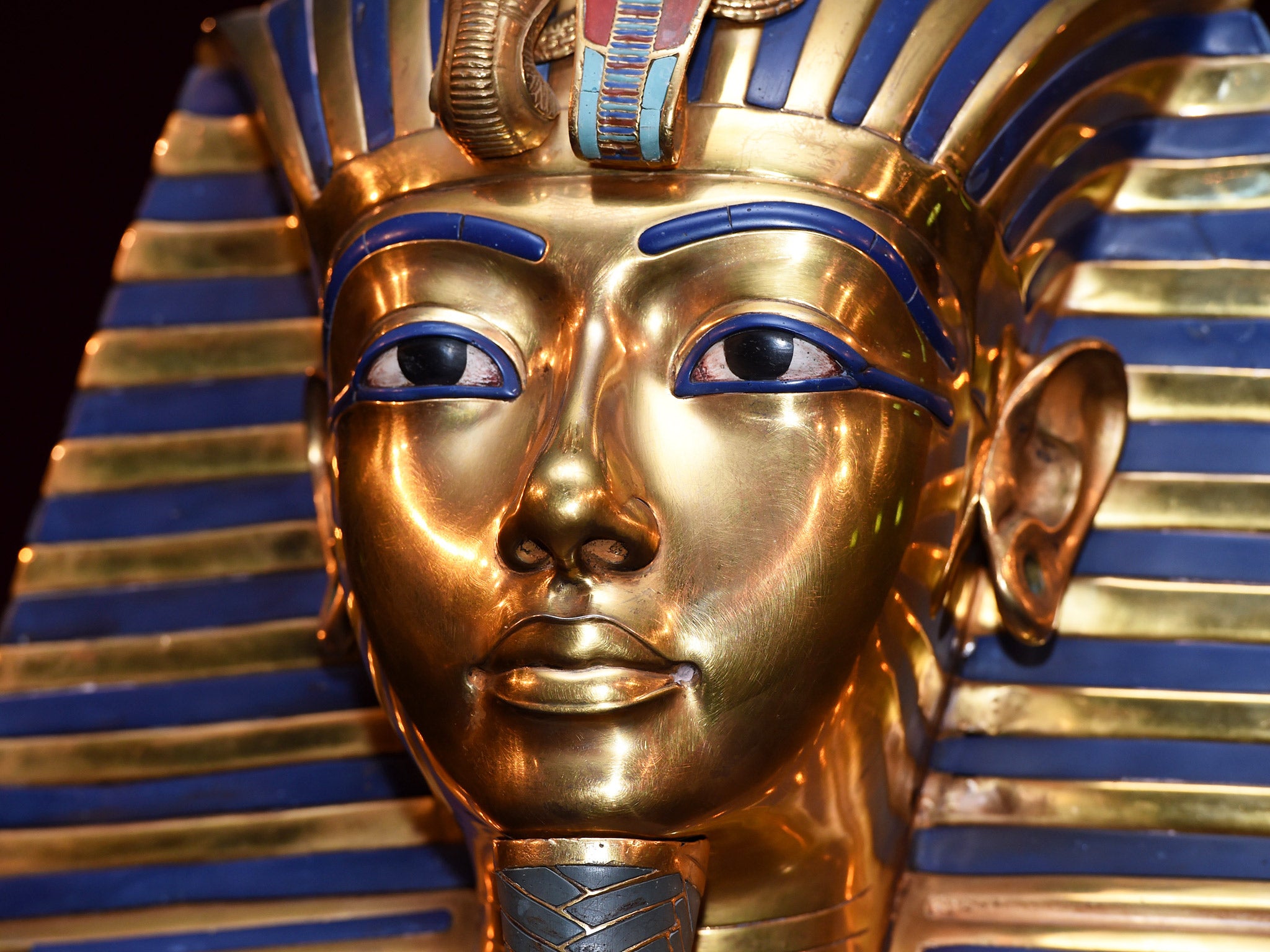The real King Tut revealed: Tutankhamun was many things, but handsome he was not
This addition to the story of Tut will be revealed in a new BBC documentary called 'Tutankhamun: The Truth Uncovered'

Your support helps us to tell the story
From reproductive rights to climate change to Big Tech, The Independent is on the ground when the story is developing. Whether it's investigating the financials of Elon Musk's pro-Trump PAC or producing our latest documentary, 'The A Word', which shines a light on the American women fighting for reproductive rights, we know how important it is to parse out the facts from the messaging.
At such a critical moment in US history, we need reporters on the ground. Your donation allows us to keep sending journalists to speak to both sides of the story.
The Independent is trusted by Americans across the entire political spectrum. And unlike many other quality news outlets, we choose not to lock Americans out of our reporting and analysis with paywalls. We believe quality journalism should be available to everyone, paid for by those who can afford it.
Your support makes all the difference.Nineteen seventy-eight was the year of Tut.
That year, more than 1.2 million people squeezed into the Metropolitan Museum of Art to view a blockbuster exhibit showcasing the King Tut called “The Treasures of Tutankhamun,” which rollicked through New York, Los Angeles and Seattle. Then Steve Martin got onstage on “Saturday Night Live” and, dressed as the boy king, crooned an ode to the pharaoh that hit No. 17 on the Billboard Hot 100.
One little fact was left out of the saga. Tut — this boy king, this lover of monotheism, this thrower of many temper tantrums — may have been many things. But handsome wasn’t one of them. He was infirm and wobbly.
This addition to the story of Tut, whose golden image has always conveyed a certain divinity, will be revealed in a new BBC documentary called “Tutankhamun: The Truth Uncovered,” set to air on 16 August. The fresh portrayal is the result of a “virtual autopsy” that used more than 2,000 computer scans of Tut along with a genetic analysis of his entire family. And the new picture is not pretty: buck teeth, club foot and a pronounced overbite.
The findings are important for several reasons. For one, it appears to disprove a pervasive hypothesis King Tut died in a chariot accident. “It was important to look at his ability to ride on a chariot and we concluded it would not be possible for him, especially with his partially clubbed foot, as he was unable to stand unaided,” Albert Zink, director of the wonderfully-titled Institute for Mummies and Icemen, told the Independent. “We need further genetic analysis that would give us more insight into his conditions.”
It also shows the extent of the effects inbreeding had on Tut, who reigned over Egypt around 1320 B.C. Corroborating earlier research, which held Tut was disabled and malarial, the genetic analysis of Tut’s family showed that young pharaoh’s parents were brother and sister.
“Inbreeding is not an advantage for biological or genetic fitness,” Carsten Pusch, who worked on a 2010 study of Tut’s family, told National Geographic. “Normally the health and immune system are reduced and malformations increase. … He was not a very strong pharoah. He was not riding the chariots. Picture instead a frail, weak boy who had a bit of a club foot and who needed a cane to walk.”

A Tut mystery has percolated since the year his opulent tomb was discovered in Egypt’s Valley of the Kings in 1922. His body, ensconced in the arid conditions of the desert, was remarkably well-preserved, but no one could figure out what killed him. For years, as his tomb’s artifacts became some of the world’s most-traveled, a debate raged over what felled the youth. Some said murder. Others thought leprosy, or tuberculosis, or malaria or a snake bite — or, yes, an ill-fated chariot ride.
Eventually, researchers have gotten closer to the truth not through the study of Tut himself, but through the study of his family. He belonged to “one of the most royal houses of ancient Egypt,” stated a 2010 paper in the Journal of the American Medical Association. Tut’s dad, Akhenaten, “is considered one of the most controversial of the Egyptian pharaohs, because his attempt to radically transform traditional religion affected all facets of society and caused great turmoil.”
It wasn’t just Tut who had a striking appearance, the study continued. It was the whole family: “Artifacts show the royalty of that era as having a somewhat androgynous appearance or a bizarre form of gynecomastia,” according to the research. The study, which concluded Tut had malaria among other illnesses, identified Tut’s grandfather, father and two stillborn children he appeared to have fathered with his half-sister.
Then a London doctor named Hutan Ashrafian entered the fray with another startling theory: Tut had epilepsy. Several pharaohs related to Tut were said to have visions that were the basis of later monotheistic religious beliefs, the New Scientist reported.
“It’s significant,” Ashrafian said, “that two had stories of religious visions associated with them,” suggesting a symptom of a heritable form of temporal lobe epilepsy. One of the pharaohs had his religious experience on a sunny day, which made sense to the London doctor. “People with temporal lobe epilepsy who are exposed to sunlight get the same sort of stimulation to the mind and religious zeal.”
Either way, it’s clear the Tut tribe were not the healthiest of folk. And Tut may have been the unhealthiest of all. One of the most striking revelations of his tomb were all the walking canes. There were, in all, 130 of them.
Copyright: Washington Post
Join our commenting forum
Join thought-provoking conversations, follow other Independent readers and see their replies
Comments